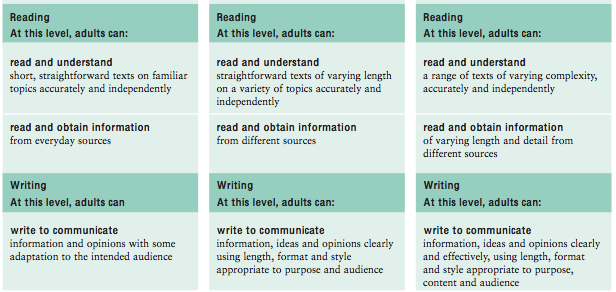Diagnostic assessment
| Learning and Teaching in Practice | |
|---|---|
| Module 8: Personalised learning and diagnostic assessments | |
| Personalised learning | Introduction | Mentoring and facilitation | Diagnostic assessment | Learning agreements | Summary |
The term diagnosis is often used with the sense of a detailed definition of a problem, such as a medical condition.
Diagnostic assessment involves the detailed definition not of a problem but of a learner's skills and knowledge. Unlike summative assessment, diagnostic assessment generally takes place near the beginning of a course of study, and is not used for certification. Instead, it is used to get a detailed 'snapshot' of the learner's current set of skills.
Diagnostic assessment is widely used to develop a learner's literacy profile - their current levels of skills in relation to pre-determined standards in a range of literacy areas.
The example below shows an extract from the literacy standards published by the UK Qualifications and Curriculum Authority:
Note: New Zealand has developed similar standards for literacy and numeracy but these are not freely reproducible here.
|
Brett's department is aware that there is a need to develop its learners' literacy skills. As a first step, Brett has downloaded the Carpentry Literacy Profile from Workbase's Literacy job profiles page. He and his colleagues have developed a simple diagnostic assessment which they use at the beginning of the course to determine each learner's literacy profile. Each learner then meets with a tutor to discuss the areas they need to develop and plan how this can be best done. |
|
For more information on literacy standards, see:
|

